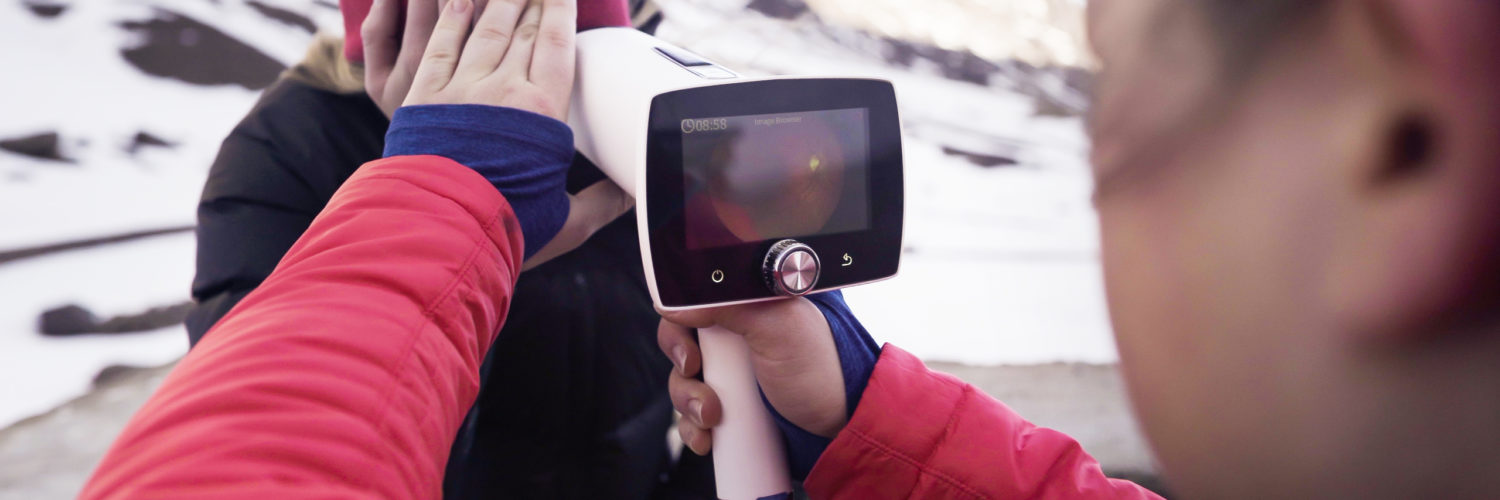
Optomed Aurora IQ camera in an expedition to the High Atlas Mountains
Jessica Westwood, Imperial College Remote Medicine,
Imperial College Ophthalmology Research Group
Can changes in the fundus at high-altitude explain symptoms of acute mountain sickness?
In March 2022, a team of students from Imperial College London’s Remote Medicine course embarked on an expedition to the High Atlas Mountains in Morocco. The aim was for each student to conduct scientific research on the effect of high altitude on the body. Optomed kindly leant me an Aurora IQ camera, thereby enabling me to investigate the effect of low oxygen levels on the blood vessels in the eye.
The retinal vasculature is thought to be a “window to the brain” as they share multiple characteristics and have a direct connection. Changes in the retina may therefore reflect what is going on inside the brain. The partial pressure of oxygen in the air falls as you ascend to higher altitudes, meaning the body must compensate in order to continue providing cells with a sufficient oxygen supply. This includes an increase in blood flow, which is reflected by changes in the width and tortuosity of the retinal vessels.
Using this state-of-the-art, digital camera, images of the retina were taken at baseline in London, daily throughout the expedition, and finally one-month post-return to London. All 10 participants of the study summited Mount Toubkal, which sits 4167 metres above sea level. There have been some previous reports of changes in the retinal blood vessels at altitude, and potentially correlating this to acute mountain sickness.
Taking daily retinal images allowed us to track these dynamic changes over the course of the expedition, and objectively determine whether there was any lag between hypoxic exposure and retinal changes. This was the first study of its kind to have taken images each day throughout ascent and descent, which was a particular strength of this project. On return to London, we analysed the sequential images to compare vessel diameter, tortuosity, and density by day. We also examined the images for evidence of high-altitude retinopathy, which is typically characterised by asymptomatic flame haemorrhages.
The expedition successfully achieved its objectives; the Optomed Aurora camera performed equally well at altitude compared to at sea level and produced high-quality images throughout. The portable, handheld design of the device made it amenable to expedition research work and would be an ideal piece of equipment to take on future projects. I am extremely grateful to Optomed for supporting us in conducting this work and collaborating with Imperial College London.
Thanks to Dr Eduardo Normando and Mr Dan Morris for their supervision of this project.